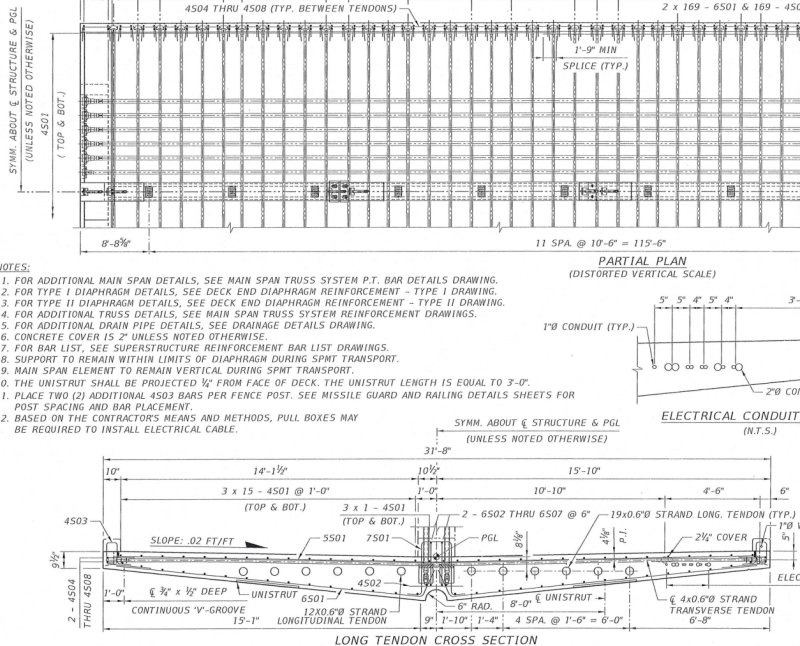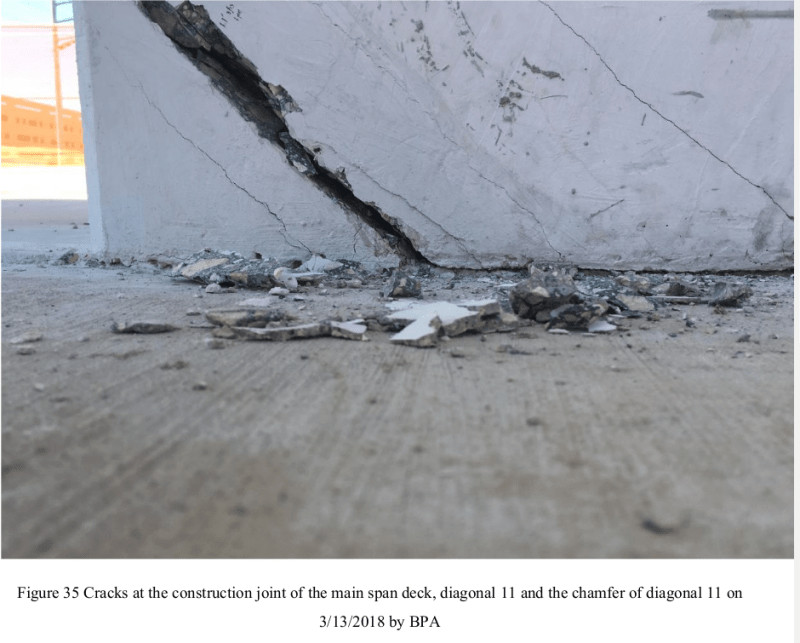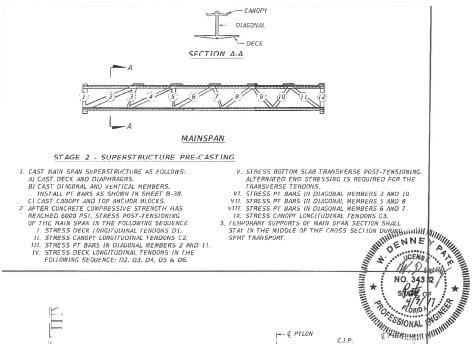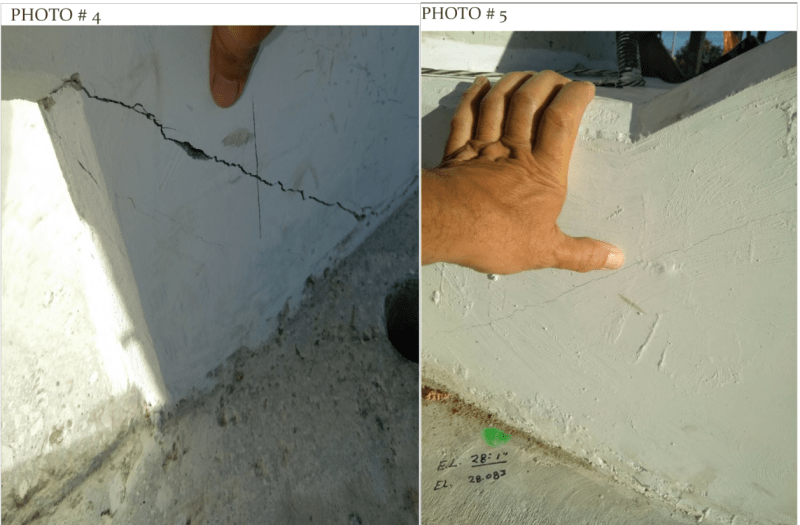Is it possible to damage Member 11 by the adopted construction sequence?
I open up this line of investigation after Tomfh raised the point and Earth314159 concurred.
Earth314159 (Structural) said:
Quote (Tomfh)
If the lower rod of member 11 was passing thru the crack at a shallow angle and was anchored into deck wouldn't retensioning 11 pull the crack open?
The evidence
(a) After collapse the bottom end of the Lower PT rod was attached to the deck. Its upper end was in the canopy
(b) Upper PT rod had both ends remained with the separated 11/12. Rod’s bottom end was on top of pier and the upper end in canopy.
(c) There was a construction joint between the deck and the separated 11/12.
(d) This photo shows the the lower PT rod intercepts the last transverse PT rod, 4’-2.5” from the end, in the design. No transverse PT cold be installed to intercept the upper PT rod due to the obstruction by the longitudinal anchors. Evidently if the Lower PT rod were to be separated from the deck like the upper one it had to rip out the affected transverse PT rod and break up part of the deck but this did not happen.
(e) An evidence showing the one PT rods effective on the deck while the other on 11/12 is OSHA report's Fig 35. Along the sloping crack in Member 11 the concrete on one side was still rigid with the deck but the other side was with 11/12 according to the condition of the construction joint.
My interest now is how the two PT rods were de-tensioned. OSHA report does not mention the procedure. It would not be surprising the rod tension was removed in a single operation instead of by stages of 50kips per rod alternately.
If the stress were fully released in one rod while the other was not then there would be a substantial stress differential between the deck and 11/12 due the fact one rod was effectively tied to the deck and the other to 11/12. The stress differential was also exacerbated by the construction joint.
The construction photos and the OSHA report have already confirmed the serious crack damage occurred immediately after the stress in 11 was removed on March 10.
Theoretically the stress release in 11, even in stages of 50kips per rod alternately, could still inflict damage to 11/12 joint with the deck because structurally one rod pulls the deck while the other 11/12 over a plane of weakness created by the construction joint. In stages the damage would be less.
When 11 was re-stressed again on March 15 every application of the staged 50kips to either rod could grind the construction joint if each rod was able to pull it own part of the span. The construction joint (CJ) between 11/12 with the deck looks increasingly likely to play a key role in the demise of the bridge due to the different effectiveness of the two PT rod anchors on either side of the CJ.
It is also interesting to note on June 19 an ENR article reported "FIGG hinted that construction-related activities, rather than design, could be chiefly to blame. According to the statement, FIGG claimed the (OSHA) report “does not include an evaluation of many important factors pertinent to the construction process leading up to the accident. " Does this open the door for FIGG to blame MCM for the bad CJ?





